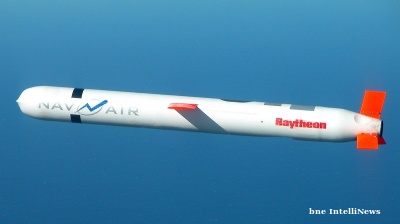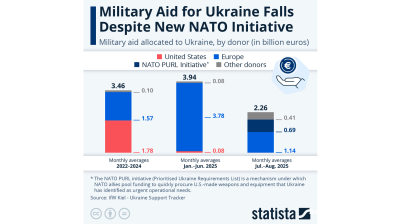Southeast Europe is set to be the fastest growing sub-region in the Central, Eastern and Southeast Europe (CESEE) areas this year, amid a generally gloomy picture for the wider region, the latest forecasts from the Vienna Institute of International Economic Studies (wiiw) show.
The report points out that after the initial “impressive resilience” shown by economies from the region in response to the economic repercussions of the conflict in Ukraine, they are now encountering challenges. Persistently elevated inflation, stricter monetary measures and a feeble global landscape are collectively exerting significant pressure on the economies of this region, wiiw said.
German contagion
Following a lacklustre performance in the fourth quarter of 2022, the economic growth in several countries of the region came to a halt in the first quarter of 2023. Poland, Czechia and Hungary started the year with negative growth.
Vasily Astrov, senior economist at wiiw and the primary author of the Summer Forecast released on July 5, attributes the economic slowdown in the region to a combination of declining real incomes, the recession in Germany and elevated energy prices.
The negative impact on the Visegrad countries is especially notable, as they have strong economic ties with Germany, though Southeast European economies such as Bosnia & Herzegovina, North Macedonia and Slovenia also send a large share of their exports to Germany.
Looking ahead to 2023, wiiw predicts a slowdown in growth, with an average of 1.2% for EU member countries in the region. However, this is still more than twice as fast as that of the euro area, which is expected to come in at just 0.5%.
Southeast Europe stands out
Among the EU members in Southeastern Europe, Romania (3.0%) and Croatia (2.5%) are projected to have relatively strong growth. Similarly, the Western Balkan economies of Montenegro (3.5%), Kosovo (3.4%) and Albania (3.3%) will have some of the fastest growth rates in the region.
“The Southeast Europe sub-region is doing better than some other parts of Central, Eastern and Southeast Europe. In most sub-regions we are covering, there has been an aggressive deceleration in growth on an annual basis that continued in the first quarter of this year,” said Astrov during a webinar to present the report on July 5.
“Southeast Europe is actually holding up pretty well. Both the Western Balkans and EU member states, especially Romania and Croatia, are doing better in terms of growth than the other eastern EU member states.”
He attributes this to the large inflows of EU funds, especially under the Recovery and Resilience Facility (RRF), booming tourism and inflows of foreign direct investment (FDI).
The fastest growing economy this year is expected to be Kazakhstan (4.5%), the only country from the Eurasia region included in the report.
On the other hand, the Visegrad countries are expected to see only modest expansion at an average of 0.6%. Although most countries in the region, except Hungary (-0.5%), are anticipated to avoid a full-year recession, they will still face a significant decline in growth in 2023 compared to the previous year.
No end to the war in sight
Growth in Russia and Ukraine was still negative in Q1 but less negative than in 2022, after both economies absorbed the initial shocks of war and sanctions. Modest positive growth is anticipated this year.
However, hopes of an end to the war in Ukraine and consequently a substantial rebound in economic activity have been dashed. After a severe contraction of 29.1% in 2022, Ukraine could experience a slight recovery with a growth rate of 2.0% this year, but no real rebound is predicted until 2025.
The energy supply disruptions caused by the Russian bombings have been largely resolved, and there is a moderate positive sentiment in the business sector, wiiw says. Additionally, inflation is on a downward trajectory. However, both unemployment and poverty rates remain above 20%.
“We assume there will be no major escalation of the war this year, and the war will gradually become localised, with a decreasing impact on economic activity in the next years,” said Olga Pindyuk, Ukraine country expert at wiiw, during the webinar.
“Our general assumption for all countries is that war won’t end this year but it will become increasingly localised and there will be no major escalation,” agreed Richard Grieveson, deputy director of wiiw.
However, Pindyuk pointed to the many downside risks, as there are “so many unexpected things that can happen”, an example being the reports this week of Russia planting explosives on the roof of the Zaporizhzhia nuclear power plant (NPP).
Russia, meanwhile, is forecast to achieve 1.0% growth this year, primarily due to its thriving defence industry, despite a sharp fall in energy revenues.
“The Russian economy has by and large adjusted to sanctions now. There will be a long-term impact, but [the immediate impact] has been digested for now, and the booming military sector is providing an important growth impetus for the Russian economy at the moment,” said Astrov.
Official Russian statistics indicate a significant surge in military expenditure, which is particularly driving industrial production. Meanwhile, private consumer spending has already rebounded to the levels seen in 2021.
Features

Journalist beaten to death in Istanbul as security conditions in Turkey rapidly deteriorate
Publisher, meanwhile, is shot in leg. Reporters regularly experience violence, judicial harassment and media lynching.

Agentic AI becomes South Korea’s next big tech battleground
As countries race to define their roles in the AI era, South Korea's tech giants are now embracing “agentic AI”, a next-generation form of AI that acts autonomously to complete goals, not just respond to commands.

Iran's capital Tehran showcases new "Virgin Mary" Metro station
Tehran's new Maryam metro station honours Virgin Mary with architecture blending Armenian and Iranian design elements in new push by Islamic Republic

Indonesia’s $80bn giant seawall
Indonesia’s ambition to build a colossal seawall along the northern coastline of Java has ignited both hope and heated debate. Valued at around $80bn, the project aims to safeguard the island’s coastal cities from tidal floods and erosion.




